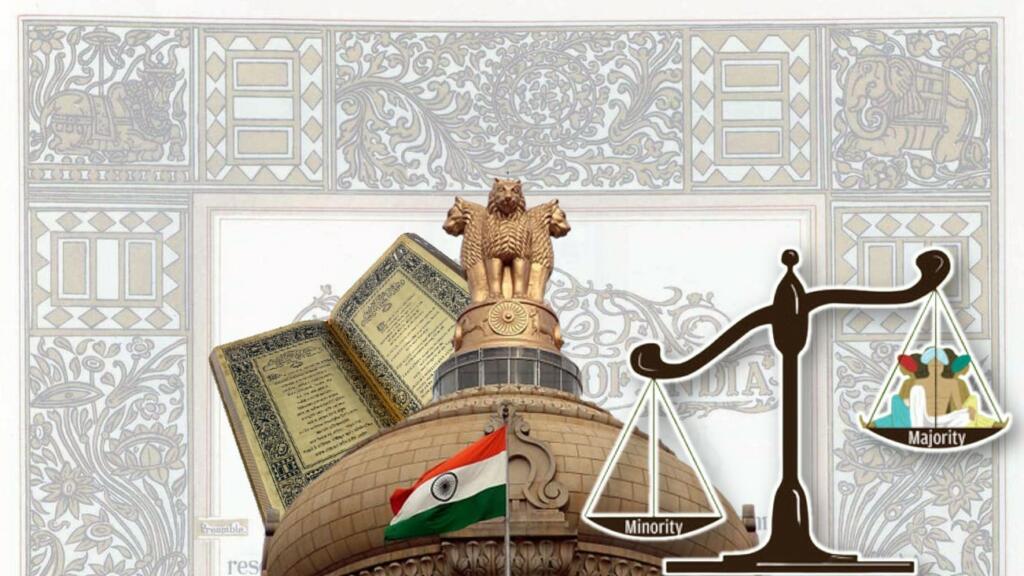On Tuesday, Assam Chief Minister Himanta Biswa Sarma, known for openly speaking his mind, during a debate on the Governor’s address in the budget session of the Assam assembly pondered upon this particular question — who are the minorities in India?
Sarma gave the example of Assam and remarked how Muslims were no longer a minority, “Muslim population consists 35 per cent of the total population of the state. There is no need to encroach the lands of tribal people residing in the sixth schedule areas. If Das, Kalita Barman, Gogoi, Chutia have not settled on their lands, Islam and Rahman must also refrain from settling in those lands.”
The Chief Minister further said that “power comes with responsibility” and as Muslims constitute 35 per cent of Assam’s population, it is “their duty to protect the minorities here”.
Muslim majority should protect Hindu minority: Himanta Biswa Sarma
He said, “We [Hindus] are minority. But, Muslim population in Assam is over one crore, you are the largest community. Being the largest community in the state today, it is your responsibility to maintain communal harmony. Responsibility has shifted towards you,”
Drawing parallels with the Kashmiri Hindus who were forced to flee their homes, CM Sarma further said, “People ask me if Assamese people will face the same fate as Kashmiri Pandits. It is the duty of Muslims to allay our fear. Muslims must behave like a majority and give us assurance that there will be no repeat of Kashmir here.”
Hindus are a minority in numerous states and UTs
It is pertinent to note that Hindus are minorities in eight Indian states. Muslims are a majority in Lakshadweep (96.58%) and Kashmir (96%) and there is a significant population of the community in Ladakh (44%), West Bengal (27.5%), Kerala (26.60%), Uttar Pradesh (19.30%), Bihar (18%) and of course Assam (34.20%), as mentioned by Himanta.
Similarly, Christians are certainly in majority in Mizoram (87.16%), Nagaland (88.10%), Meghalaya (74.59%) and there is a significant population in Arunachal Pradesh, Goa, Kerala, Manipur, Tamil Nadu, and West Bengal. Yet the entire community, across the country, is treated as a minority.
What does Minority mean, according to the constitution?
Whenever a democracy like India is faced with such baffling questions, we usually turn towards the constitution – our holy grail for the answers. However, the reader may be surprised to note that the Constitution actually conceives ‘minority’ as an open category to protect the interests of various religious, linguistic, and culturally distinctive groups.
It was nowhere explicitly mentioned that Muslims, Christians etc. are the minorities. In the aftermath of the Babri Masjid case, Congress played its appeasement politics, and the National Commission for Minorities Act (1992) was brought in.
To not make it obvious which community was being serenaded by Congress, Section 2(c) of the National Commission for Minorities Act, 1992 granted minority status to five communities (Muslims, Christians, Sikhs, Buddhists and Parsis) based on their national population.
However, even the 1992 law does not define the term ‘religious minority.’ Instead, it is the central government that is empowered to notify a few communities as “minority” for the purpose of this Act.
Moreover, granting minority and majority status based on the national population is a lazy and bummed approach as established earlier through the figures suggesting Hindus are minorities in dozens of states.
And yet here we stand. Muslims will still be categorized minority in Assam and reap the rewards of different government schemes. Christians in Mizoram will continue to be pampered despite the Hindus and their dwindling population requiring urgent attention.
Using National population numbers to define minority is arbitrary, irrational, and violative of the Constitution
Just the way the definition of secularism has been diluted in India, the word Minority has been exclusively used to denote the Muslims. The Minority commissions that exist on national and state levels are often found exclusively pandering and coughing funds for the Muslims. Other minorities such as Jains, Parsis, and even Sikhs are meted a step-brotherly treatment.
Example: A Jain may be lynched but the news may not make the airwaves. However, the moment a Muslim is lynched, every single authority and body gets into an overdrive mode. This is the kind of mollycoddling towards the Muslim community by political and bureaucratic institutions that has led to the belief that Muslims are a minority throughout India.
Those who follow Hinduism, Judaism and Bahaism are minorities in regions like Ladakh, Mizoram, Lakshadweep, Kashmir, Nagaland, Meghalaya, Arunachal Pradesh, Punjab, and Manipur.
However, they cannot establish & administer educational institutions of their choice because of the non-identification of ‘minority’ at the State level, thus jeopardising their basic rights guaranteed under Articles 29 and 30.
Up until last year, Lakshadweep, a Muslim-dominated UT had Fridays – the day of Jumma as a holiday, instead of the usual Sunday. No one batted an eye. However, the moment the secular government overturned the decision, the minority ‘majority’ population of Lakshadweep started feeling threatened.
Read More: ‘No holiday on Jumma Fridays,’ New Lakshadweep administration declares
Currently, Minority is a candy that is distributed to the non-Hindu population by politicians to ensure their proverbial vote banks are filled to the brim. The Centre and the Supreme Court should intervene and ensure that minorities are identified at the state level, not the national level. It is indeed a surprise that decades have passed and yet the country has not been able to produce a cogent and cohesive definition of what constitutes a ‘minority’.
